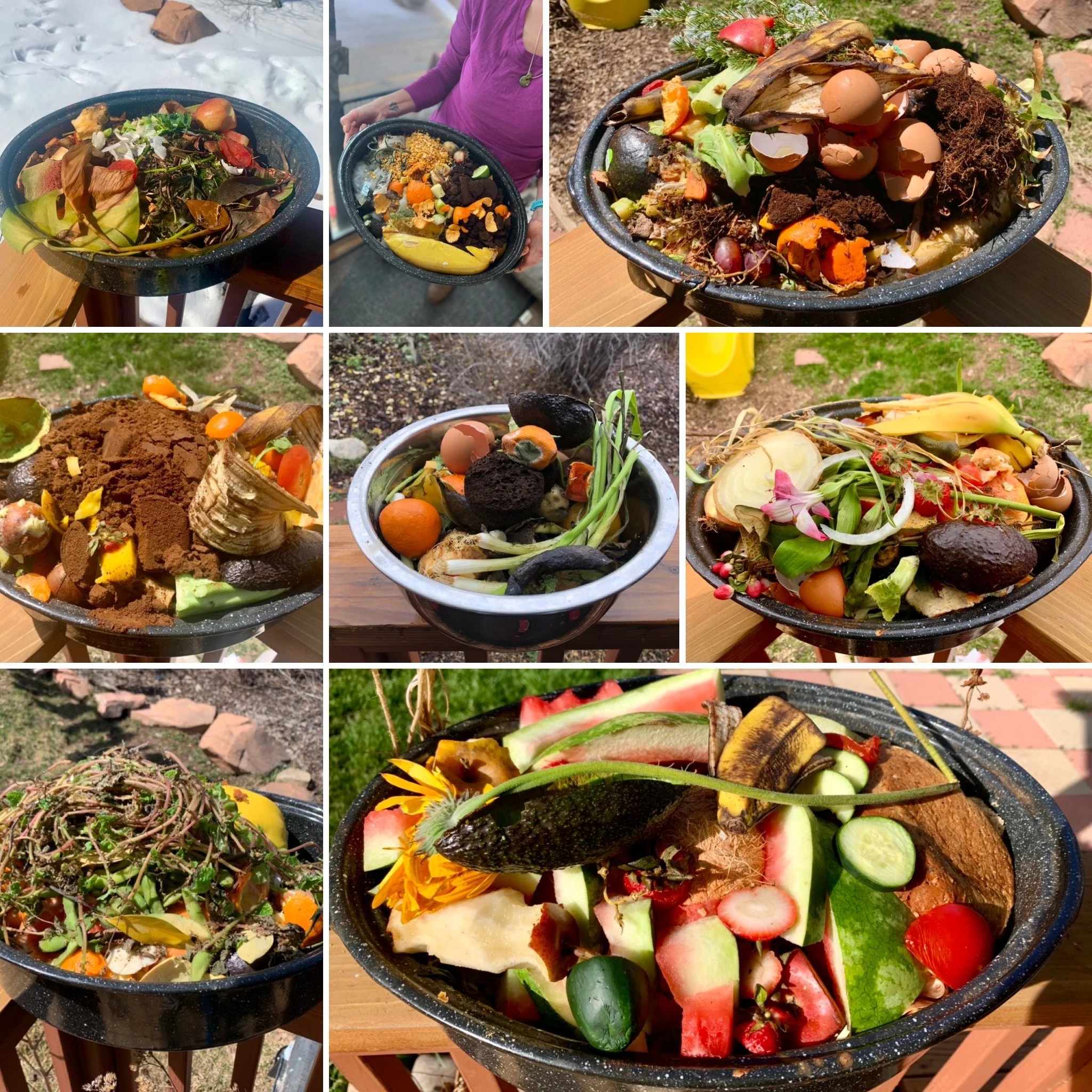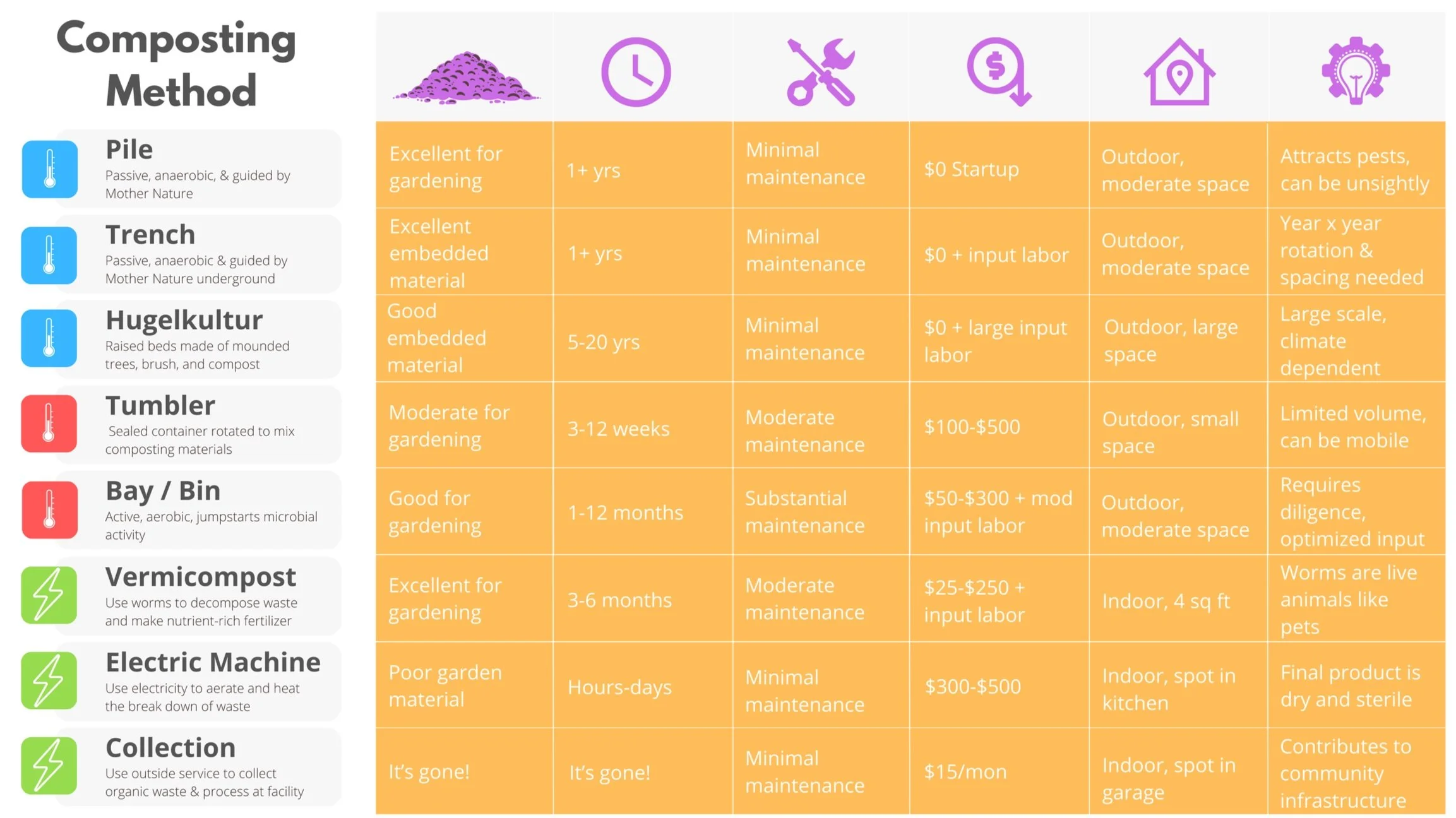Choose Your Home Composting Method
Closing the loop on organic waste is one of the most satisfying ecologically reparative interventions I’ve made!
Home composting is a smaller slice of your whole ecological footprint, compared to home heating/cooling, for example. However, I think it may be your best investment to feel inspired along your regenerative living journey. Redirecting organic waste into composing has a valuable and visceral return. It goes straight back into Earth – eliminating the landfill methane gas conundrum and creating treasured black gold.
Most importantly, home composting is pretty forgiving. Meaning, you can screw it up quite a bit and still recover. While there is expansive learning into the depths of organic chemistry of decomposition, basic composting practices are extremely straight forward.
Which composting method is best?
Choosing your best composting solution means ensuring that your organic waste goes back into a full cycle and suits your unique living conditions. There’s no forced ranked order of best solutions when it comes to home composting. Ask yourself these questions when starting a home composting system:
How important to you is the quality of the final product? Do you care how long it takes to finish? How much work do you want to put into maintenance? How much money do you want to invest into getting started? What kind of space can you allocate to it? What other unique factors might influence your needs?
Home composting snapshot
Here’s a matrix to evaluate the most prominent home composting methods with various considerations to determine the best approach for your lifestyle and route to successful follow-through.
Personal composting experience tips:
-
What can or cannot go into a home composting system really depends on the unique conditions of your place, not what the internet tells you (as long as it’s organic!)
For example, my friend puts literally everything, from chicken carcasses to loaves of bread, in his compost pile because he has 5 acres of undisturbed open space and doesn’t care if it grows stench or maggots.
Check the Wastewell online tool for an excellent interactive exploration! (Wastewell)
-
I use a dual-bay hot(ish) composting method.
I’m not really attentive enough nor do I don’t have immediate access to manure to get my hot-compost temperature sufficiently high enough for swift decomposition. Therefore, our dual-bay is sort of a cold/hot system.
Each bay is about 3x3x3. We use one bay for all our organic kitchen and yard waste. The second bay is for weeds. I don’t mix the two because I don’t want to inadvertently redistribute weed seeds unless I’m certain they’ve broken down with enough heat. They compost at difference paces and that works well enough for now.
-
Yes! We were extremely with happy with our composting tumbler for 3 years when our objective was to simply get rid of our kitchen waste.
We swapped to a dual-bay system when we needed more capacity and actually wanted to produce nutrient-rich compost to aid the garden. Without direct access to the ground, the tumbler relies primarily on bacteria, rather than all the bugs, worms, and mycelium found in nature.
Also, the $120 tumbler we purchased of Amazon was pretty shoddy and the plastic cracked in negative degree temperatures. If going this route, place the tumbler away from you house and invest in a sturdier piece of equipment than we did.
-
No. IMHO, using electricity for compost only really makes sense if you have no outdoor space, city collection, or maintenance time. Even then, there is not a specific product that does not seem like an unnecessary spend, to me. A vermicompost box seems like a better investment.
-
The internet will try to tell you that there are dozens of different methods. Really, they are all basically the same process and principles with slightly different contexts.
IMHO, trenching is just putting your compost pile in the ground when you don’t want animals digging through it. Hugelkultur makes great sense when you have a vast space and plenty of moisture and time.
This NRDC page is a great deeper dive into all the methods. (NRDC)
-
Ratios in composting material really do matter. But this is something where you can easily turn the dial back and forth by adding wood chips or fresh organics.
In my experience, your C/N ratios will naturally fall to one side or the other depending on your climate. In my super dry climate with an open bay method, the ratio falls toward carbon. When we used an enclosed tumbler in PDX, we learned to keep a bag of wood chips nearby to turn down the nitrogen dial.
I regularly reference the book, Let it Rot, for guidance. (Let it Rot)



